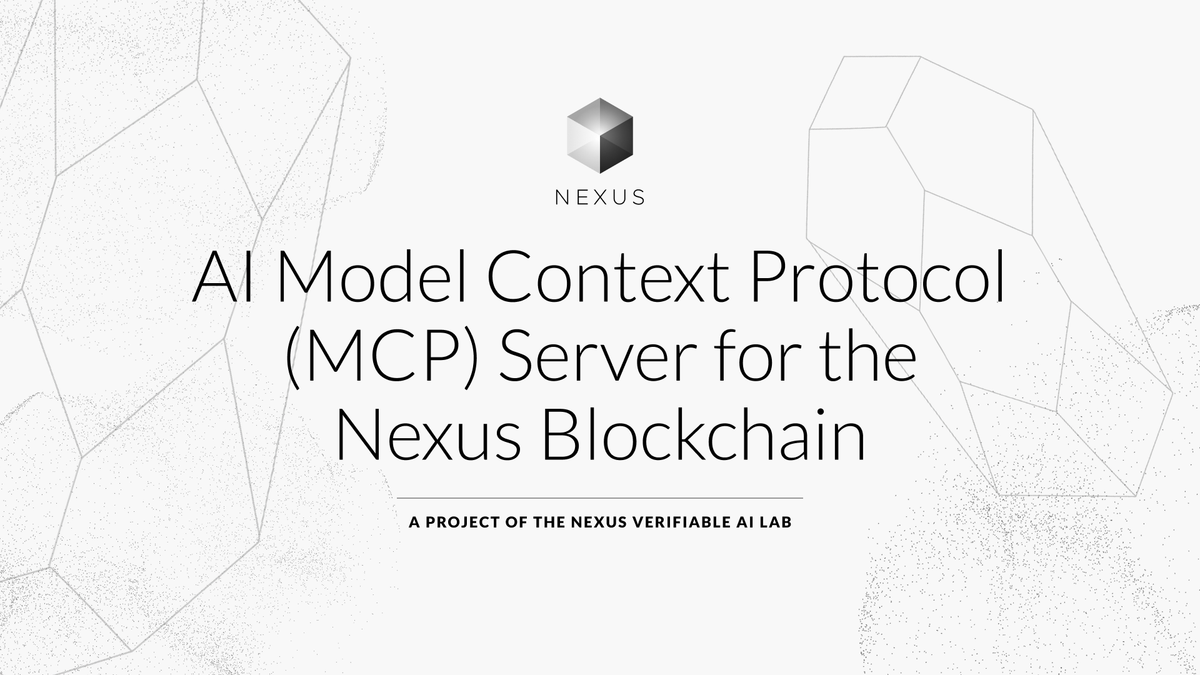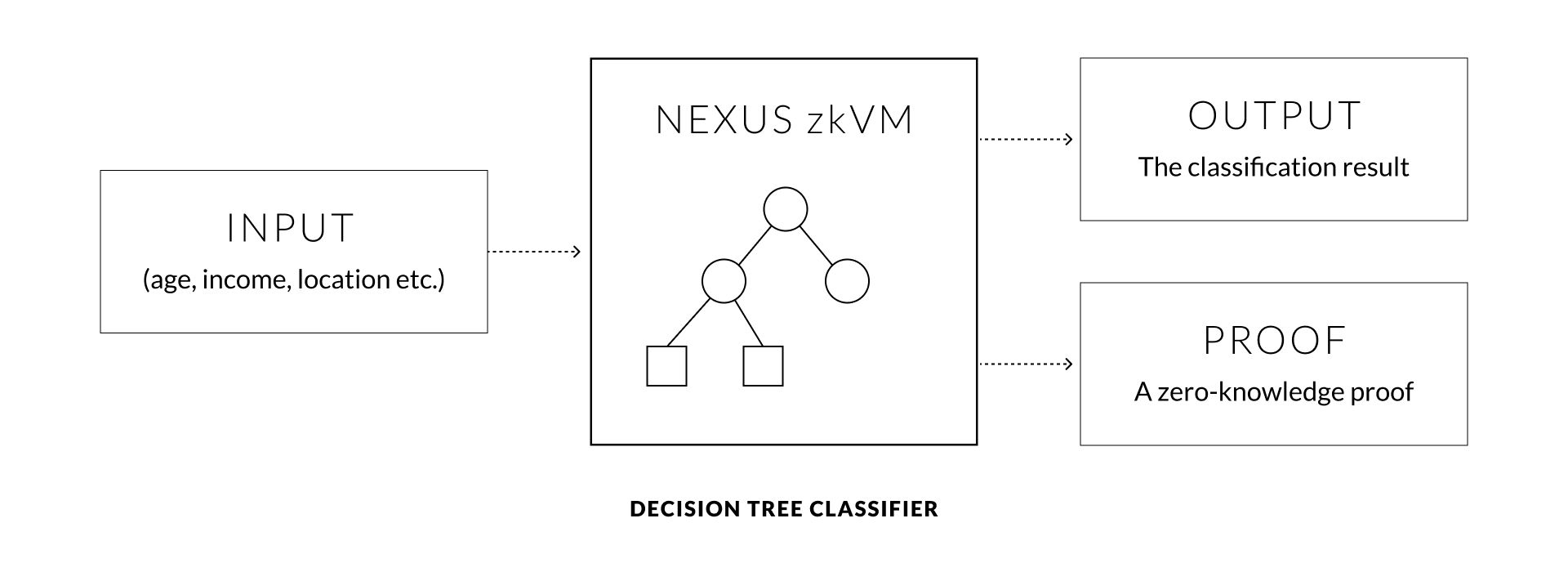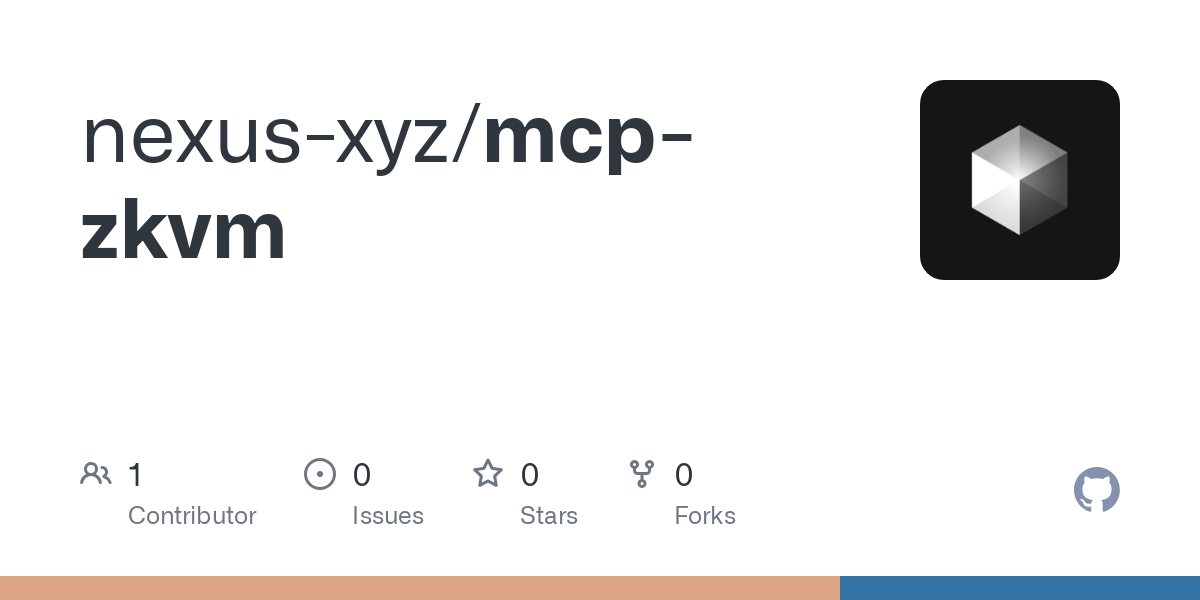Community Report: Closing the Year that Made Nexus Real
2025 was transformational for Nexus. This is our LAST community report of the year! The past year, Nexus has turned

Do you know what this number represents?
"proof": "0xa3b9f83e95c3c2b...d904a"
It’s not just a string of hex. This proof verifies that a machine learning model – a simple decision tree – evaluated an input with specific features, and classified it as low risk. It also proves exactly which model ran, with what inputs, and under what configuration.
This is a zero-knowledge proof generated by the Nexus zkVM, as part of a new demonstration project from the Nexus Verifiable AI Lab.
We’re excited to introduce the Nexus zkMCP, a lightweight demo protocol and open source codebase that brings cryptographic integrity to AI model execution.
In a world where AI agents are increasingly autonomous and embedded in critical decision loops, trusting the output is no longer enough. We must prove how it was generated. Who ran the model? What data was used? What parameters were applied? And can we verify that, cryptographically?
That’s what the Nexus zkMCP sets out to explore.
Decision tree demo
zkMCP stands for Zero-Knowledge Model Context Protocol. It’s a prototype system that demonstrates how machine learning models can be executed inside the Nexus zkVM, producing cryptographic proofs that verify exactly what ran, with what inputs, and under what configuration.
At its core, zkMCP addresses a foundational challenge in the age of autonomous AI: Can we trust that a model’s output is correct and prove it, independently of who ran it?
The system creates a verifiable chain of computation that can be audited by anyone, offering a path toward proof-carrying AI where agents, services, or systems can produce not just answers, but mathematical guarantees about how those answers were derived.
This is not a production service or a full integration with the Nexus network. Instead, it’s a controlled, single-node demo server that shows what’s possible. It demonstrates that verifiable model execution isn’t science fiction, it’s now a working reality.
The Model Context Protocol (MCP) itself is a specification developed by researchers and developers focused on AI safety and reproducibility. It defines a standard format for describing the who, what, where, and how of model execution: what model was used, what data was input, what configuration was applied, and who initiated the run.
MCP is increasingly being adopted by teams working on autonomous agents and multi-party systems, including early adopters at organizations like Anthropic. Pairing MCP with a zkVM is a natural step as it moves the protocol from descriptive to provable, anchoring context not just in metadata, but in math.

Learn more about MCP support for the Nexus blockchain.
AI developers are asking important questions about trust, attribution, and reproducibility – particularly those working on:
But most AI infrastructure today assumes trust in the system operator. We believe that future systems will require something stronger: proof of computation, not just best-effort logging or good-faith claims.
zkMCP shows what this might look like starting from the ground up.
Our first working example is a simple decision tree classifier or a tiny, deterministic model that classifies input data into one of several categories based on a few branching logic rules.
It’s fast, interpretable, and a perfect entry point for demonstrating verifiable execution.
Here’s what we do:
This enables an external agent – even one with no prior trust in the system – to verify that the output is genuine and consistent with the input, model structure, and constraints.

This is just the beginning. Over the coming weeks, we’ll explore additional examples, such as:
Each example will run inside the Nexus zkMCP and return a verifiable result, allowing agents or systems to trust and prove what they’ve computed.
As we outlined in our announcement of the Verifiable AI Lab, Nexus is committed to building the cryptographic foundations for AI systems we can trust, prove, and verify.
The Nexus zkMCP project is part of that vision, helping to move from speculative discussion to working code. It’s a demo, but it’s also a signal: we believe verifiable computation will be essential infrastructure for AI systems of the future.
The Nexus Verifiable AI Lab is dedicated to exploring the frontier of verifiability, economics, and artificial intelligence in order to expand the boundaries of human and machine cooperation.
We’re opening this up to collaborators, researchers, and developers working at the intersection of AI and zero-knowledge proofs. If you’re interested in building with us, testing the demo, or suggesting a model you’d like to see proved by the Nexus zkMCP – we’d love to hear from you.
We also invite you to set up your own zkMCP server and run your own models, or go deeper: write precompiles to improve performance, add new model types, or extend the system’s capabilities. Share what you build back to the repo and help shape the foundation of a more verifiable AI future.
You can get started here:

Let’s build it together.